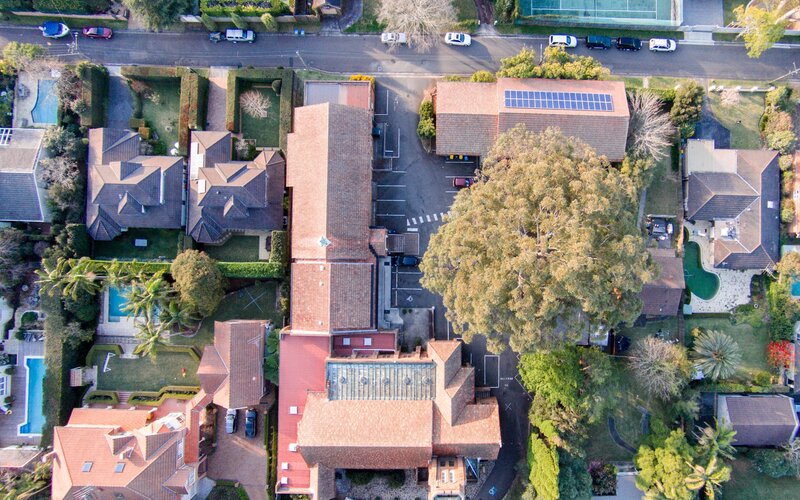There are hundreds of reasons Australian property owners may consider refinancing their home loans. But one of the big ones is switching to a lower interest rate. A half of a percentage point could save a borrower thousands of dollars in interest every year, and potentially hundreds of thousands over the life of their loan.
You can get some idea of how much you could save in interest using Savings.com.au's Refinance Home Loan Calculator.
According to the Australian Bureau of Statistics (ABS), refinanced home loans totalled more than $332 billion in value over the 12 months to December 2024. It was a period when many homeowners were likely seeking interest rate relief while the Reserve Bank cash bank remained unchanged.
But refinancing doesn't just happen - it typically requires some legwork. How much a borrower might save will depend on the size of their mortgage, how many years are left on their loan term, and how much lower their new interest rate is, among other factors.
It also pays to remember that refinancing is rarely free of charge. Any potential savings should be considered against the cost of refinancing to determine whether switching to a new loan returns a net gain.
Refinancing costs can vary greatly among lenders and borrowers' individual circumstances. But in general terms, there are two main types of home loan refinance:
-
External refinance: When you move your loan to another lender
-
Internal refinance: When you refinance your home loan with your existing lender
A homeowner looking to refinance through their existing lender might be able to bypass some of the fees associated with refinancing, such as exit fees, valuation fees, and application fees. However, they may also find the interest rates offered by their current lender are notably higher than those advertised by a competitor.
But that's not always the case. Many lenders are looking to keep borrowers' loans on their books and might waive some fees, offer discounted interest rates, or other enticements in competitive markets.
It can also pay to be on the lookout for home loan offers and cashback deals available on the wider market.
Costs of refinancing a home loan
There are many fees that lenders and banks can (and often do) tack onto the home loan refinancing process. This will depend on individual lenders but be sure to read the fine print. Some may waive application fees but charge higher ongoing fees, for instance.
Hint: Paying attention to the comparison rate can be an easy way to factor in many ongoing fees and charges when choosing a new loan. A loan with high fees is likely to have a comparison rate that's significantly higher than the advertised rate.
When contemplating the cost of refinancing, it's important to calculate the cumulative expense rather than comparing individual fees charged by different lenders. Some of the typical upfront refinancing fees you might come across are explained below, along with high-level indicative costs.
1. Mortgage application fee
If you're looking to refinance externally (that is, with a different lender) you may need to pay an application fee, also known as an establishment or upfront fee. This is a one-off payment to set up the new home loan and will cover the administration costs incurred by the lender. Sometimes, a lender will include any costs associated with valuing a borrower's property in their application fee.
2. Property valuation fee
Depending on how much equity you have in your property, a new lender may ask to value your asset before giving you the tick of approval to refinance. Valuation fees vary between lenders, properties, and locations.
Valuations can cost as little as $50 or more than $1,000, but they generally sit somewhere between $300 and $600. Meanwhile, there are plenty of lenders that don't charge a valuation fee or simply tie it into their wider application fee.
3. Discharge fee for termination of mortgage
A mortgage discharge fee, also known as a termination fee, is generally applicable to an external refinance and charged by your existing lender. Your lender may require you to pay a discharge fee to cover the administrative costs it incurs when ending a loan contract.
While some discharge fees can top $1,000 or more, they typically sit at around $200 to $400.
4. Break cost
If you currently have a fixed-rate home loan and you want to refinance before the end of your fixed term period, you'll probably have to pay a break fee. These cover any potential losses your current lender might face due to your agreement ending before time.
But what losses does a lender bear? Again, this will depend on the individual lender and also what's going on with interest rates on the wider market. You might assume that when you take out a fixed-rate home loan, your bank simply uses the money from the deposit accounts of its savers to hand over to you. But that's not always the case.
Generally, a bank or lender will borrow the money they lend you from the wholesale money market where the interest rates will be lower than the rate they charge you. If you pull out of your fixed-rate agreement early, the bank or lender will still have to pay interest on the money it initially borrowed on your behalf. Therein lies the reason for break costs.
Break costs can be somewhat complicated to calculate as they depend on how much a bank or lender is out of pocket. They generally differ based on the loan amount, the fixed rate compared to the current variable market rate, and the length of time remaining on the fixed term. Every lender will have its own calculation method.
In some cases, it can cost thousands of dollars to break a mortgage (Savings.com.au even reported on a $35,000 break fee in 2020), so it's probably worth contacting your lender to work out how much you might be up for if you were to refinance.
5. Settlement fee
Settlement fees are paid to a lender to settle a new loan. They cover the costs of a lender's legal representation who will conduct the loan settlement with you and your conveyancer or solicitor. The cost to settle is commonly between $100 and $500 but can be as much as $800 or more. If you take out a professional package as part of your new loan with an annual fee, the settlement fee is often waived.
6. Mortgage registration fees
A mortgage registration fee is charged by state and territory governments for mortgages to be added to a register, effectively preventing you from selling the property without paying back the lender. Registration fees vary between states and territories, ranging from $115 to $232.
7. Exit fees
Following government reforms, lenders have been banned from charging early exit fees on loans taken out after 1 July 2011. However, loans taken out before this date may still incur exit fees, which can be up to $7,000. You'll need to check the terms of your existing loan to find out if an exit fee applies to you.
8. Time and effort
Time is money, and it takes time to compare home loans and fully assess the terms and conditions between different products. Refinancing can take anywhere from a few days to multiple weeks, depending on multiple factors.
Whether you believe it's worthwhile spending your time researching, filling out paperwork, organising appointments, and waiting for valuations depends entirely on you. Using a mortgage broker could save you some hours although be sure to check the market yourself to ensure you have a broad idea of what constitutes a competitive refinancing deal.
The table below can get you started on some of the lowest interest rate home loans currently available on the market.
| Lender | Home Loan | Interest Rate | Comparison Rate* | Monthly Repayment | Repayment type | Rate Type | Offset | Redraw | Ongoing Fees | Upfront Fees | Max LVR | Lump Sum Repayment | Extra Repayments | Split Loan Option | Tags | Features | Link | Compare | Promoted Product | Disclosure |
|---|---|---|---|---|---|---|---|---|---|---|---|---|---|---|---|---|---|---|---|---|
5.54% p.a. | 5.58% p.a. | $2,852 | Principal & Interest | Variable | $0 | $530 | 90% |
| Promoted | Disclosure | ||||||||||
5.49% p.a. | 5.40% p.a. | $2,836 | Principal & Interest | Variable | $0 | $0 | 80% |
| Promoted | Disclosure | ||||||||||
5.64% p.a. | 5.89% p.a. | $2,883 | Principal & Interest | Variable | $250 | $250 | 60% |
| Promoted | Disclosure | ||||||||||
5.64% p.a. | 5.89% p.a. | $2,883 | Principal & Interest | Variable | $248 | $350 | 60% |
|
Savings.com.au's two cents
Contemplating the list of refinancing costs may be daunting, but it's worth measuring against the potential long-term savings generated by refinancing your home loan to a lower interest rate or better loan terms and conditions. Depending on your circumstances, you could recoup these costs in just a few monthly repayments.
Also ensure you are thorough in working out which refinancing costs apply to you, asking both your existing lender and your potential new lender what they will charge you. Before you jump to a new loan, it's worth doing a full cost-benefit analysis to determine whether it will be worth your while.
First published on March 2022
Image by Pixabay via Pexels.

Ready, Set, Buy!
Learn everything you need to know about buying property – from choosing the right property and home loan, to the purchasing process, tips to save money and more!
With bonus Q&A sheet and Crossword!






 Bernadette Lunas
Bernadette Lunas
 Denise Raward
Denise Raward
 Harry O'Sullivan
Harry O'Sullivan

 Emma Duffy
Emma Duffy

